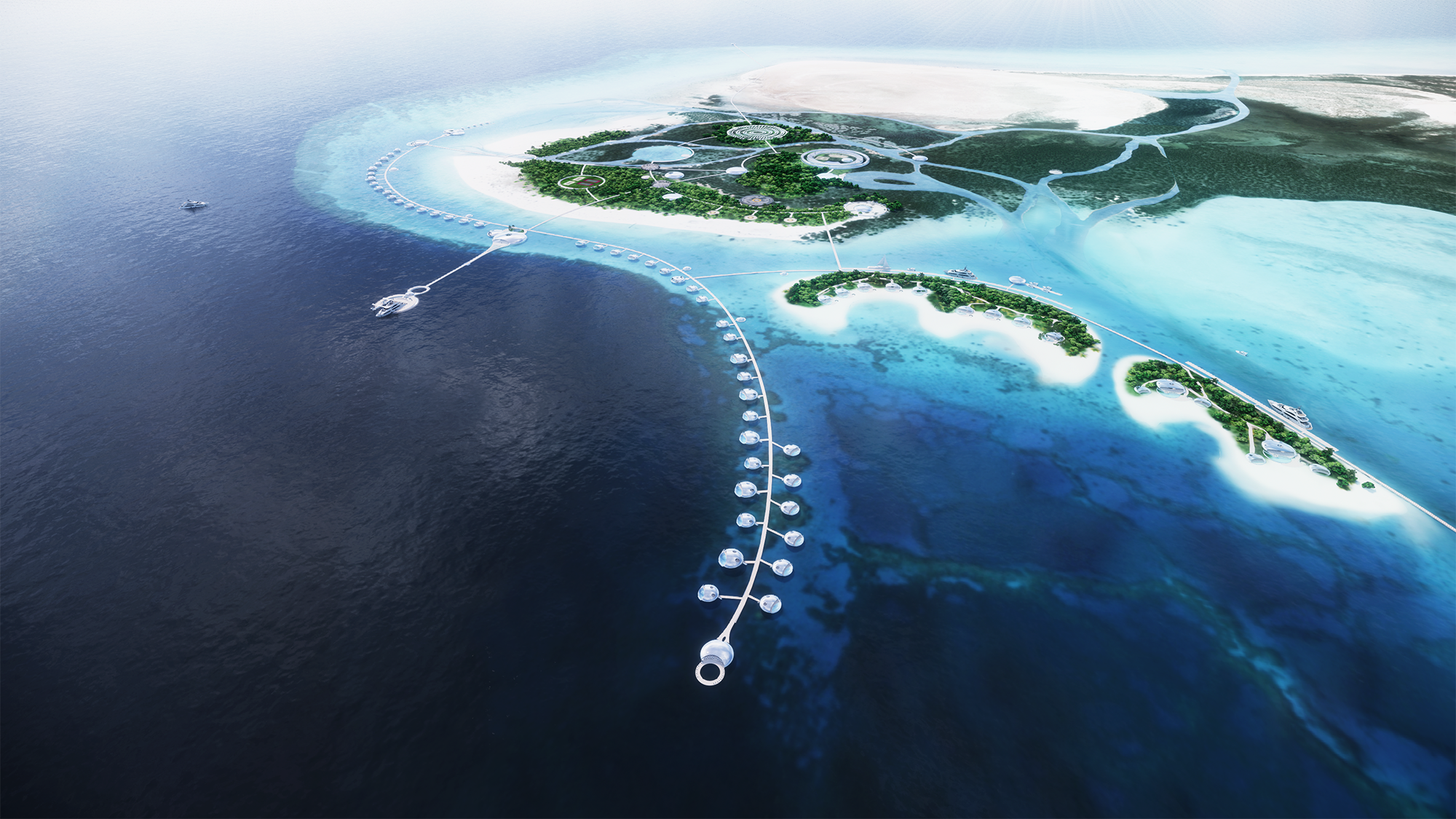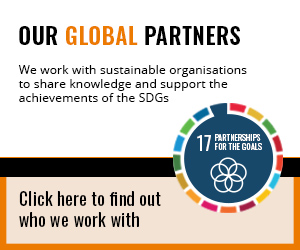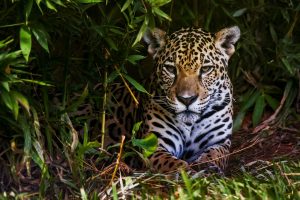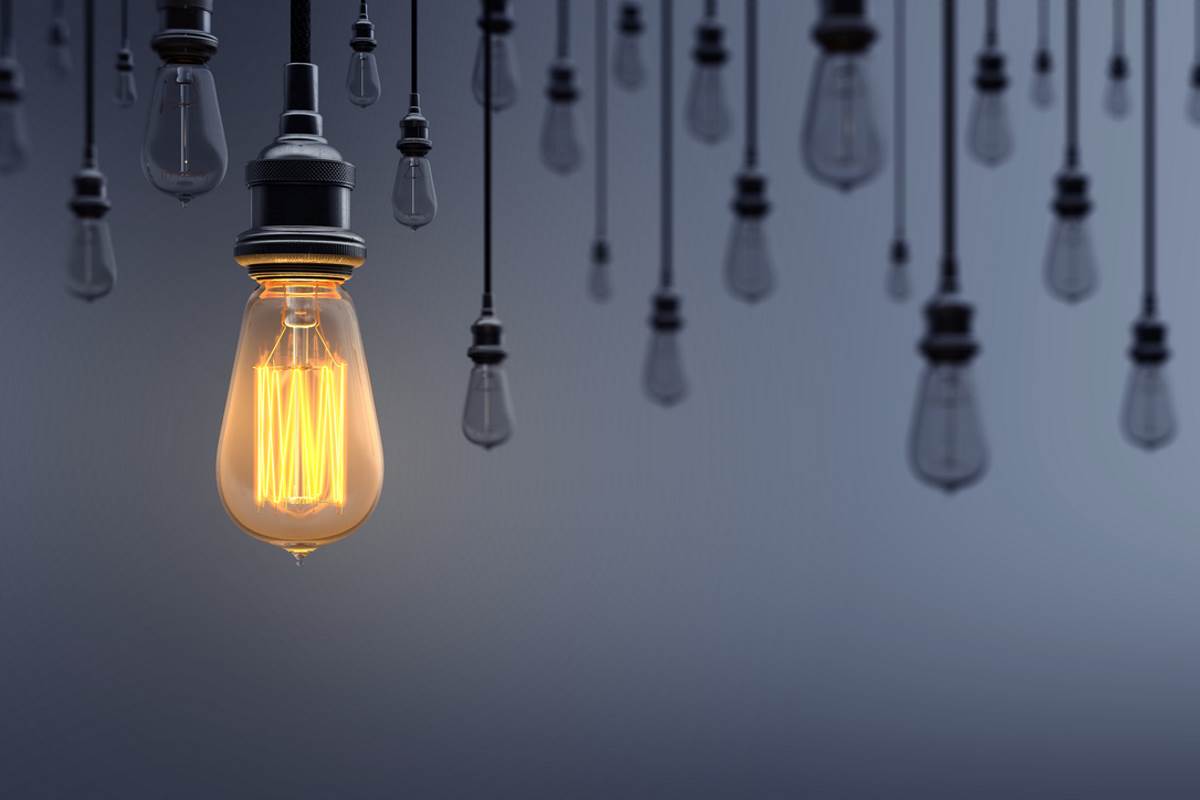Tourism is an important part of the world’s economy and supports more than 300 million jobs, but it is often blamed for harming the environment and impacting local communities. It doesn’t have to be like that. Jeremy Swinfen Green talks to John Pagano, CEO of The Red Sea Development Company (TRSDC), the developer behind one of the world’s ambitious and regenerative tourism projects – The Red Sea Project – about a very different sort of destination in Saudi Arabia.
John Pagano: We want The Red Sea Project to be a very different tourist destination. We have an area a bit smaller than Belgium, a very beautiful and unique space with mountains, canyons, sand dunes, and even volcanoes. The jewel in the crown is an archipelago of 90 islands with thriving coral reefs, white sandy beaches. And it’s all untouched.
From the start we decided to set new standards in sustainability. Our goal wasn’t just to maintain the status quo, it was to enhance the conservation value by 30 per cent. And that’s what we believe we will achieve over the next couple of decades. Our aim is regenerative tourism that actively improves the environment through development.
BR: The focus on sustainability – where did that come from?
JP: This focus comes from the very top. King Salman is absolutely determined that we preserve and enhance this environment for future generations. So sustainability permeates everything we do.
That’s why we are going to limit the numbers to a maximum of one million visitors a year. I could easily accommodate 10 times that. But it would destroy the very thing that makes us unique. And we’ll only develop parts of this huge area. For example, we have 90 islands but will only develop a quarter of them. We have set aside many of the others for the preservation of critical habitats, to protect species like the hawksbill turtle, green turtle and the other creatures that call the Red Sea home.
Let me give you an example. Early on, we came across an island called Al Waqqadi. It is the most wonderful island. As a developer, your mind starts racing: you imagine what it will look like. It’s going to be the place to visit. It has everything: white sand, beautiful turquoise water, the most amazing sunsets… perfect.
Then we discovered that Al Waqqadi is a nesting site for the critically endangered hawksbill turtle. So the choice was, do I develop this and have a commercial success? Or do I help to protect an endangered species? It wasn’t that difficult. We set that island aside.
BR: How big an opportunity is this for investors?
JP: If you look at which economic sectors are most important around the world, tourism is one. It is suffering at the moment, but it will rebound dramatically. Tourism represents roughly 10 per cent of global GDP. In Saudi Arabia it’s 3.4 per cent, most of which is religious tourism.
So there is huge potential for tourism here. It’s not a saturated market where each development just adds more to an already crowded space. Here the competition is very thin. So the development represents a very significant investment opportunity.
BR: How will the resort be sustainable?
JP: Sustainability is not enough. We want to set new standards in regenerative tourism. We have set ourselves targets in terms of the carbon content of our buildings and we are hoping to achieve LEED platinum status for all of them. To do that, we are using a modular construction system, building the modules that will make up the hotels in offsite factories. It becomes a manufacturing process rather than a construction process. And manufacturers are good at efficiency, while ensuring a quality finish and reducing waste.
When the modules have been manufactured, they are shipped to site and put together. This minimises the numbers of workers on site, something which can have more of an environmental impact than the buildings themselves.

We are planning to power the destination with 100 per cent renewable energy 24 hours a day. All our energy is going to be generated by solar and wind, and we’re building the largest battery storage facility in the world to guarantee supply at night-time. We are literally off grid, which represents a notional saving in CO2 emissions to the atmosphere of around 470,000 tonnes per year.
In addition, we are experimenting with growing food sustainably. Farm-to-table is attractive for guests and also minimises your carbon footprint. We are looking at circular food production where we grow algae to sequester carbon and to feed fish for the table – those fish pollute the water they live in, and that in turn can be used to irrigate and enrich the soil.
And we are planting mangroves and seagrasses, which sequester carbon more effectively than trees. We plan to experiment with mechanical trees that scrub carbon from the atmosphere. In an ideal world, we will be extracting more carbon than is generated by guests coming to the resort by air.
BR: How does the development benefit the local community?
JP: In this region developers usually bring in consultants from all over the place – they come together, they build, and they disappear. But it would be a waste if we didn’t build an organisation that lasts and that can ultimately be a legacy, a real-estate champion for the kingdom.
Over 50 per cent of our staff are Saudi. We are bringing bright, talented Saudis to work alongside experienced expats so that knowledge transfer takes place. We have worked with the University of Prince Mugrin to offer 120 scholarships in hospitality, accredited by the École Hôtelière de Lausanne. We hired 45 [people] with no previous experience and trained them as landscapers. We trained 30 sustainability stewards to remove marine debris from our beaches and educate the local community on sustainability. And working with the Human Resources Development Fund, we are creating vocational training for 1,600 people and we will hire all of them. In all, 35,000 direct jobs will be created by the destination, plus an additional 35,000 indirect and induced jobs
The demographic in Saudi Arabia is young: 70 per cent of the population is under 35. They support Vision 2030. They want these opportunities. The enthusiasm and optimism for the future is extraordinary. We received more than 16,000 applications when we launched our Elite Graduate Program, which is indicative of the positive response we experience elsewhere for other initiatives.
BR: In what way is worker welfare managed?
JP: When planning worker accommodation we decided not to follow convention. We said, how can we create an environment that is different, that is more village-like? So we are building apartments shared between four or five people. Each has its own bathroom and washing facilities. There are gardens, cinemas, gymnasiums, mosques and games pitches. We have a main medical centre and outlying clinics, and restaurants with multiple cuisines.
We want to take care of our employees’ welfare. Our view is that if workers are well rested and have things to do outside work, it will result in greater productivity and better-quality work.
BR: And how is the development progressing?
JP: We are moving in earnest now. Covid-19 was a bump in the road, but we managed to proceed without it impacting on progress. Some 500 contracts have been awarded so far, with 7.5 billion riyals – nearly $2 billion – committed in contracts, and twice that planned by the end of the year. We have announced a major public private partnership and started work on the airport, access roads and buildings. All this to get the resort ready for welcoming our first visitors in 2022.
written by Jeremy Swinfen-Green for The Red Sea Development Company

John Pagano, CEO of The Red Sea Development Company






